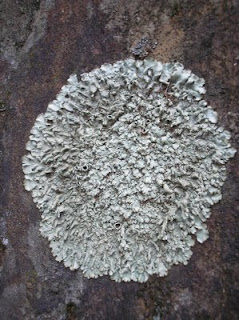By Jack Scott
During our final visit to the woods last week, we made a crude ink from acorn galls. This
post will look at the process behind the formation of these galls, and the science involved
in producing the ink.
"A gall is an abnormal growth produced by a plant or other host under the influence of
another parasitic organism. It involves enlargement and/or proliferation of the host cells
and provides both shelter and food or nutrients for the invading organism."
Oak galls are formed when gall wasps lay their eggs in different parts of oak trees.
Knopper galls are produced when Andricus quercuscalicis lay their eggs in the young
catkins of oak trees. Acorn cup galls however are produced by Andricus grossulariae
laying their eggs with in the tissue of an acorn cup.
Upon hatching from the eggs, the hungry larvae begin feeding on the host tissue
surrounding them. The plant's defensive reaction to this intrusive mechanical or chemical
irritation is to isolate the toxins or activities of the invader in a tough, tumorous mass of
tissue. Ironically, in doing so the plant provides food and shelter for the developing
ravenous larvae.
Secretions from the larva, including saliva and excreta, are believed to control the
development of the gall. The gall can grow so much that the acorn and its cup are
completely hidden from view. The gall changes colour from red, to green, to brown as it
develops. After completing their growth and metamorphosis, often many months later, the
adult wasps escape by chewing a circular exit tunnel through the wall of the gall. The
precise mechanism by which different species of wasps produce such remarkably unique
galls is still being debated by cecidologists (people who study galls).
The chemical composition of galls varies depending on the gall-forming agent and the
plant in question. The acorn galls we used contain 45-50% tannic acid as well as high
concentrations of gallotannic acid. It is these acids that are needed to create ink.
Our crude attempt to produce ink involved beating acorn galls, boiling the broken pieces
with iron, and eventually straining the product through a small sieve. There are however
more precise, alternative methods which arguably produce better results. This in one such
method...
Resources
Galls, 3 parts by weight
Water, 30 parts by weight
Ferrous sulphate, 2 parts by weight
Gum arabic,1 part by weight
Method
• Break the galls into pieces, then grind them in a coffee mill.
• In a beaker, add the water to the ground galls. Leave the mixture to ferment in a sunny
corner at room temperature for 3 days.
• Filter the mixture and add the ferrous sulphate to the solution. Stir well and leave for 3
days.
• Add the gum arabic, stir the mixture and you have your ink.
After the galls have been broken up, the reactions occur in two stages: the fermentation of
gallotannic acid to gallic acid followed by the formation of the ink pigment. What follows is
an explanation of these processes. Whilst not easy to follow, it certainly gives all the
information needed...
"Galls contain large amounts of gallotannic acid but relatively little of the gallic acidneeded to make the ink pigment. In the fermentation stage, the galls release theenzyme tannase from the Aspergillus niger and Penicillium glaucum fungi that arefound in the galls. Over three days, tannase catalyses the hydrolysis of gallotannicacid to gallic acid and glucose.
The ink pigment is formed in two further stages: a Lewis acid-base reactionfollowed by a redox reaction.
Gallic acid and ferrous sulphate form ferrous gallate (a colourless water-solublecompound), plus H3O+ and SO42-.
Almost immediately, the ferrous gallate reacts with oxygen to produce water andferric pyrogallate, a black insoluble octahedral complex in which the ligands ofeach ferric cation are two molecules of gallic acid.
The ink pigment is ferric pyrogallate. Owing to the presence of H3O+ ions, thesolution is acidic."
Yikes! Hope you got all that. Essentially, the tannins present in the galls are what
eventually produce the ink. This process (or slight variations) has been used for hundreds
of years in many different countries. So, from the parasitic larvae of a gall wasp came the
the works of Shakespeare, the American Declaration of Independence, and my sketch
from our final adventure in the woods.
Sources
http://waynesword.palomar.edu/pljuly99.htm
http://www.bugsandweeds.co.uk/galls%20p1.html
http://therealknowhow.com/2012/02/28/making-oak-gall-inkdye-using-acorns/
http://www.scienceinschool.org/2007/issue6/galls
http://natureinfocus.wordpress.com/2011/11/14/acorn-knopper-gall/
http://www.wildlifetrusts.org/species/knopper-gall





















